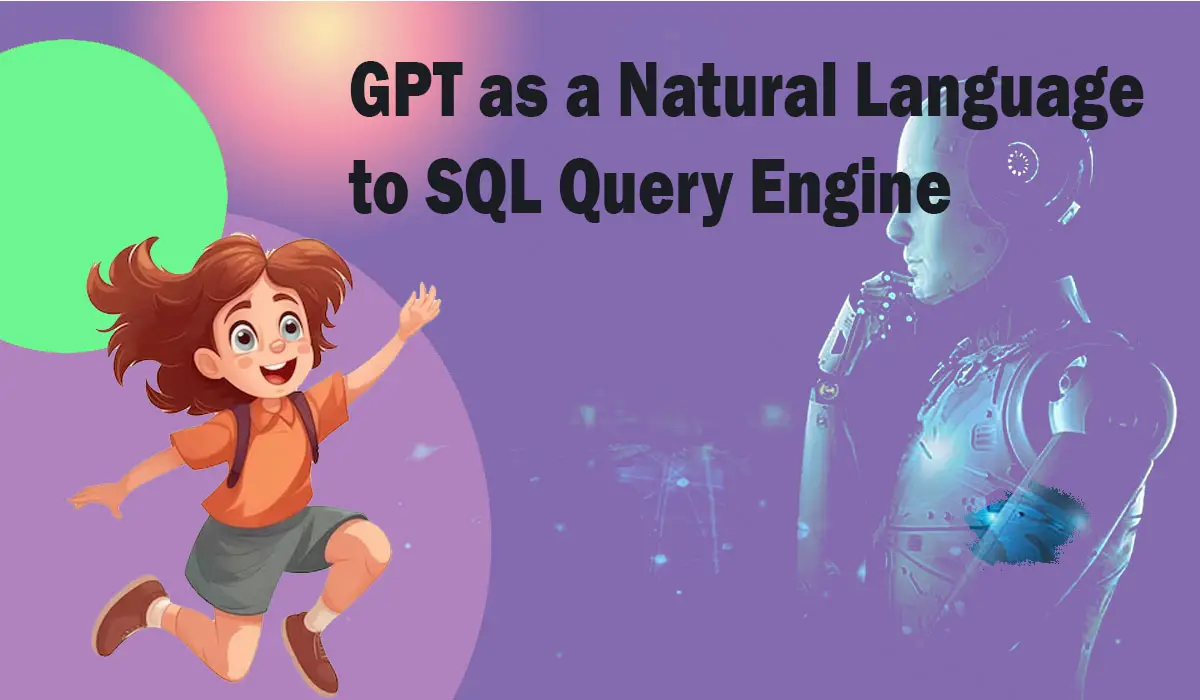GPT, or Generative Pre-trained Transformer, is a powerful language model that can be utilized as a Natural Language to SQL Query Engine. By leveraging GPT’s capabilities, we can enable users to interact with databases using simple and intuitive natural language commands. This guide will walk you through the process of setting up a system to convert natural language queries into SQL code, allowing you to interact with your data in a more user-friendly manner.
How to Use GPT as a Natural Language to SQL Query Engine
Below is a comprehensive outline of the steps involved in using GPT as a natural language to SQL query engine:
- Convert Sample Data: To get started, you need sample data in a structured format (e.g., CSV, Excel, or a relational database). This data will be used to train and validate the performance of your GPT model during the language-to-SQL conversion.
- Create LLM Prompt: Next, design a Language Model (LLM) prompt that instructs GPT on how to interpret natural language queries and convert them into SQL. The prompt should define the task and provide examples of how users can interact with the data. For instance:
sql
Task: Translate natural language queries into SQL commands for a product database.
Examples:
- What are the top 5 products by sales?
- Show me all products in the 'Electronics' category.
- Find products with a price below $100.
- Send Data to OpenAI’s API: With your LLM prompt prepared, integrate with OpenAI’s API to access GPT. You can use libraries like OpenAI GPT-3 SDK to send queries and receive responses. Make sure to include the sample data for fine-tuning the model.
- Execute SQL Code: Once GPT processes a natural language query and generates the corresponding SQL code, execute the SQL query against the database using a secure and authorized connection. Fetch the results and present them to the user in a readable format.
- Optional – Create an Interactive Application: For a user-friendly experience, consider building an interactive application that allows users to type or speak natural language queries directly. The application can then handle the communication with GPT and execute the SQL code for displaying results.
FAQs about Using GPT as a Natural Language to SQL Query Engine:
Q1: Can GPT understand complex SQL queries?
A1: GPT can handle a wide range of SQL queries, including those with multiple conditions, joins, and aggregations. However, fine-tuning the model with more data might be required for improved performance on complex queries.
Q2: How do I ensure the security of my database while using GPT?
A2: Always follow best security practices, such as using secure connections, sanitizing inputs, and implementing role-based access control (RBAC) to restrict database access.
Q3: Can I use GPT for real-time applications?
A3: Yes, GPT can be used in real-time applications. However, consider the API response time and the complexity of your queries when designing your application.
Conclusion:
Utilizing GPT as a Natural Language to SQL Query Engine opens up exciting possibilities for enhanced human-computer interaction with databases. By following the steps outlined in this guide, you can create a seamless and user-friendly experience, enabling users to access and manipulate data through simple natural language commands. Always ensure data security and experiment with fine-tuning to improve the system’s accuracy and performance.

